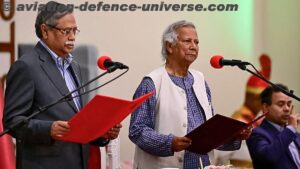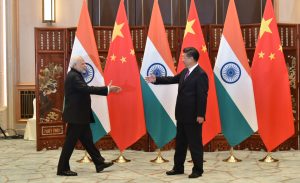
By JK Verma
New Delhi. 24 August 2017. A town which very few outside the Army had heard of is now the talk of the nation. Doklam is now the cynosure of all eyes in India, this region and probably observers of world over too. The Indian and Chinese troops have been in a face-off since June 6 when Chinese troops started making a road at tri-junction of Bhutan, Tibet and India in Bhutanese territory.
When the Peoples Liberation Army (PLA) ignored the protests made by Bhutan, Indian forces had to stop Chinese troops on the request of our close neighbour Bhutan. Chinese started construction of road in the disputed territory with the ulterior motive of humiliating India as well as achieving the strategic benefits.
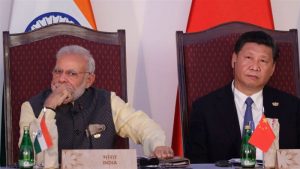
The government controlled Chinese media constantly threatened India of dire consequences and Chinese spokespersons obdurately stated that Indian troops must vacate the area unconditionally. The Chinese media on behest of government not only reminded India of 1962 debacle but also shown the pictures of Chinese defence exercises and projected as PLA has amassed large congregation of troops in the disputed area. China Daily in its editorial even stated that countdown of the conflict between both the forces has commenced.
The intelligence sources mention that most of the pictures shown by the Chinese media are either concocted or old pictures or of the different areas. The analysts feel that Chinese media is trying to frighten Indian policy makers, press and the public through these rhetoric that China is ready for a war hence India must withdraw its troops.
China ignored the levelheaded offer of Indian leaders including Foreign Minister that the troops of both the countries should vacate the disputed area and then the matter can be resolved amicably. China defiantly insisted that Indian troops must vacate the area while Chinese troops will not leave the disputed territory.
The eyeball-to-eyeball confrontation is continuing from more than two months and India utilized this time in strengthening its position on the ground by sending more troops and weaponry. The troops are also acclimatized in the area. The Eastern Command which defends the area has three corps at its disposal. Besides army, Indian Air Force stations are more or less in the plain areas and IAF is capable of cutting the supply lines of Chinese troops which can be disastrous for them.
Home Minister Rajnath Singh clarified in a ceremony organised by Indo Tibetan Border Police Force (ITBP) on August 21 at New Delhi that India has no expansionist plans and wants to resolve the present standoff with China at Doklam peacefully and through diplomatic channels. He further mentioned that India wants to have cordial relations with all its neighbours but gave a stern warning that Indian forces are capable to safeguard its borders.
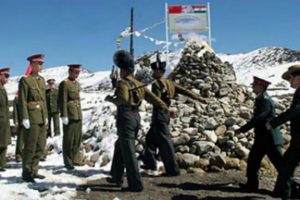
The military analysts claim that PLA needs minimum of 2 lakh troops in the area if they really want to push back Indian army forcibly. Chinese cannot depute such a huge number, with arms and ammunition, in that isolated area clandestinely. Satellites and Indian intelligence agencies would know about the movement and Chinese have not started any such large scale movement so far. Nonetheless Indian security forces including intelligence agencies have to be extra vigilant as China attacked India in October 1962 and conflicts at Nathu-la and Cho-la also occurred in the months of September and October 1967 respectively. Needless to remind antagonistic PLA that India emerged victorious in 1967 scuffles.
The Chief of Army Staff General Bipin Rawat paid a three days visit to the forward areas of Ladakh and Kashmir located on India China borders. In the tour which commenced from August 20 General Rawat examined the preparedness of the armed forces and met the local commanders who briefed him about the ground situation. Army Chief’s visit at this juncture is important as he will understand the true picture of the area and can brief the political hierarchy. It will also boost the morale of Indian forces.
Chinese forces may have more military capabilities than Indian troops but it will be difficult for PLA to fight with the battle hardened Indian forces. Chinese forces have not fought any war after 1962 while Indian forces fought wars in 1965, 1971 and in Kargil in 1999.The neighbouring countries which are afraid of China because of its economic might and projected military prowess will also understand that Chinese forces are not as powerful as China is publicising.
Chinese army is much bigger than Indian army but it has more commitments too. China shares borders with 14 countries and out of them it has hostile relations with eight countries consequently it cannot pull army from several places. At present China is acting as a regional bully therefore quite a few of its neighbours cherish ill-will against it, which will be positive for India.
Several projects of Border Road Organisation (BRO) of constructing strategic and all-weather roads and bridges on India- China border were lagging behind due to paucity of funds or delay in sanction of the amount. According to Comptroller & Auditor General (CAG) there are inordinate delays in construction of more than 60 roads on India-China Borders. Defence Ministry has taken a landmark decision and enhanced the powers of Director General of BRO up to Rs. 100 Crores for procurement of indigenous or imported construction material. It will increase the pace of building roads in the strategic areas.
China also wants to inculcate friendly relations with Bhutan on one hand and on the other hand it wants to mitigate Indian influence there. China also wants to establish diplomatic relations with Bhutan and open its embassy there. Indian diplomatic missions as well as intelligence agencies must keep watch on Chinese activities in Bhutan which will be enhanced soon.
According to reports emanating from Hong Kong, Chinese President Xi Jingping already survived six assassination attempts at different places which indicate the strength of his opposition groups in the country. Sources also mention that top Chinese Communist Party officials were behind these assassination bids. Beside these assassination efforts there were coup attempts also including one in March 2012. Analysts mention that a terse battle is going on between Xi Jinping the present strongman and former top leader Jiang Zemin. The 19th National Congress of Communist Party of China would be held in last of 2017 and there not only new leadership would be elected but majority of Politburo Standing Committee members would also be elected. President Xi Jinping has to prove his strength in National Congress and it is the reason that China has taken such an unyielding stand in Doklam.
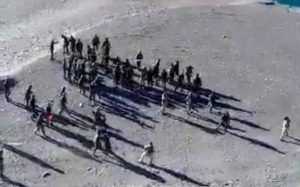
The flag meetings held between Indian and Chinese forces remained fruitless, in the meantime on August 15 Chinese forces entered near Pangong lake in Ladakh area equipped with iron rods and stones. The security forces of both countries scuffled however Chinese troops were withdrawn.
Japan in a statement, backed India’s stand and mentioned that present status quo should be maintained and there should not be any change on the ground by force. United States Department also issued a statement on August 16 and stated that the dispute between India and China may be resolved peacefully.
The chances that China will resort to full scale war with India and PLA may attack Indian forces at multiple places are remote as both the countries would suffer heavy losses. China which is dreaming to become super power in near future would also suffer and its economy will be shattered. Chinese industries which are already suffering from a slowdown will get another jolt in case of large scale war with India which is an emerging power. Indian economy which is growing fast will be devastated but India has no option but to fight back the invading PLA if Doklam face-off is not resolved peacefully. In case of war newly raised mountain strike corps of India would occupy some Chinese territory where PLA is weak, which may be helpful in negotiations after the war ends.
China will not resort to a full scale war because in that case India will join US camp which will certainly be against Chinese interests. Not only this India being a regional power may also like to constitute a group of countries which are against China but do not oppose it openly due to the fear of Chinese reprisal.
India cannot withdraw troops from Doklam as it will be catastrophic and China will continue bulldozing India as it is doing to other small neighbours. China understands the language of strength hence India has to be firm, polite and diplomatic. The best plausible solution is that forces of both the countries withdraw from the disputed territory and then experts try to negotiate long-standing peaceful solution.
The government controlled Chinese press as well as Chinese spokespersons should also not issue provocative statements as these articles and statements create ill-will and erode the chances of peaceful negotiations.
At present China has put a rigid condition that negotiations can start only if Indian troops withdraw from the area which India cannot accept hence both countries should involve third party so that negotiations can start. BRICS (Brazil, Russia, India, China and South Africa) summit is scheduled to be held in China from September 3rd,hence Russia can arbitrate so that the present standoff continuing from more than two months end amicably.
(Jai Kumar Verma is a Delhi-based strategic analyst and a retired senior intelligence officer. The views in the article are solely the author’s. He can be contacted at editor.adu@gmail.com)


































